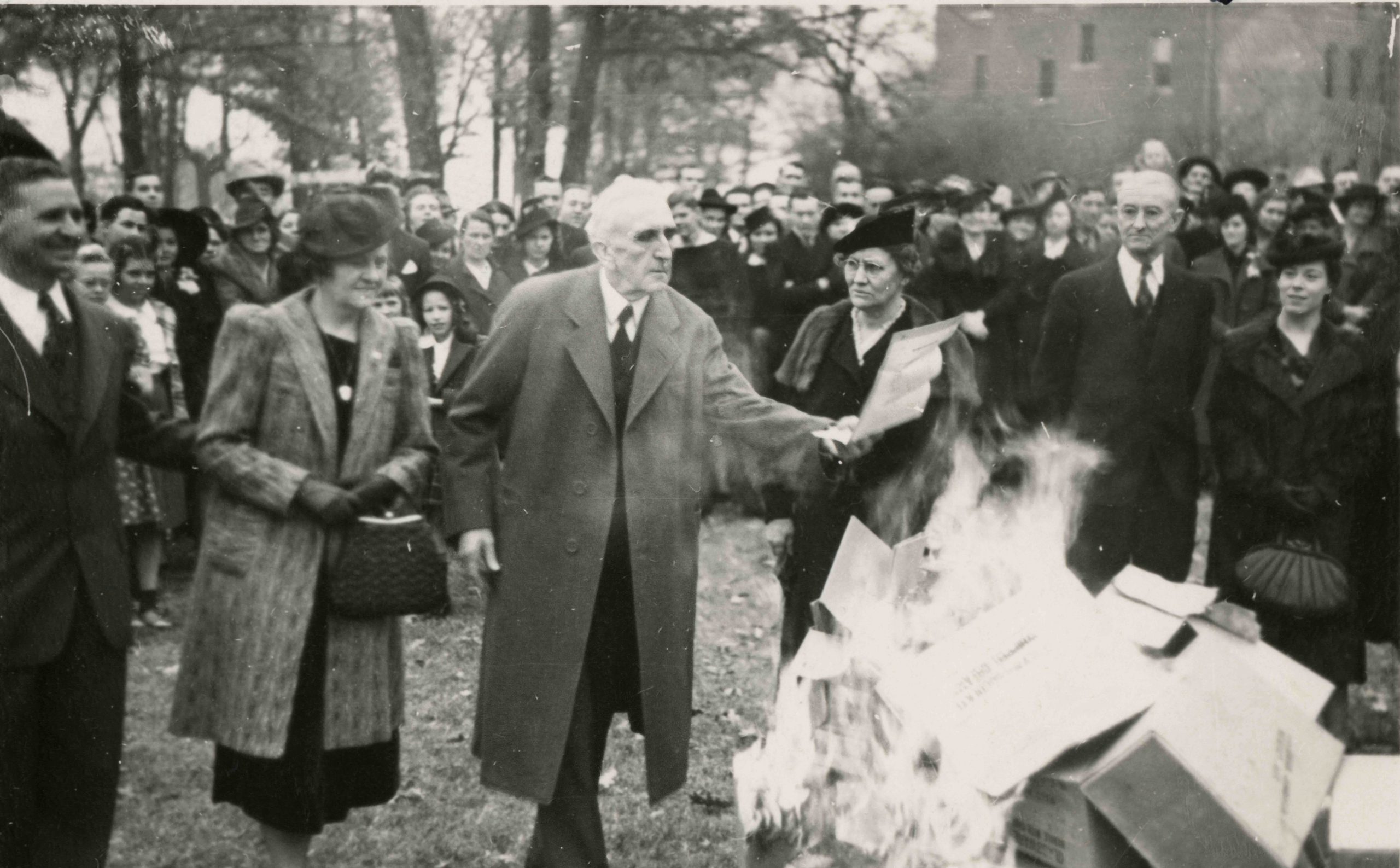
Following its centennial year, Harding students, faculty and staff continue to follow the ideals, life and legacy of J.N. Armstrong, the University’s first president.
As Arkansas Christian College and Harper College merged into one, a new era was set to begin. Named after James A. Harding, the college started its journey with Armstrong at the helm.
Armstrong, also known as Nelse, knew he was taking on many responsibilities in the coming years. With his wife Woodson, Harding’s daughter, by his side, Armstrong knew God would lead them and his peers on the right path.
“Father, we pray for wisdom for the year 1924,” Armstrong said, as quoted in “For Freedom” by L.C. Sears. “We do pray that if it be thy will, we may live it through, and that we may by thy help make it the best year we have ever lived.”
As Armstrong’s tenure rolled into the years of the Great Depression, he heavily promoted a Christian education — despite constant financial struggles.
Armstrong would teach and preach the gospel wherever he went. He even used these skills to provide for his coworkers.
During summers, Armstrong would travel to churches and universities to teach others about his passion for Christ. Armstrong would use the money he earned to pay his faculty members at Harding.
“I shall never be satisfied till this is done,” Armstrong said. “We can make them free schools just as soon as we want to do it.”
His interest did not just involve his coworkers in the administration. Armstrong served as one of the first faculty advisers for The Bison. Archives and special collections librarian Hannah Wood commended Armstrong for his constant care for those surrounding him.
“It was always about the students,” Wood said. “It was about the school, it was about the work that God put before him. It was never about himself. To me, that is probably the biggest lasting legacy of Armstrong.”
Editor and designer for the Harding Centennial book Tom Buterbaugh said Armstrong’s servant leadership lives in the Harding community today.
“He just had an incredible work ethic,” Buterbaugh said. “His full life was spent working and giving what he had to help others. He wanted to make sure that the college would succeed.”
Though Armstrong provided the recipe for spiritual growth in students, he never flourished in raising funds for the college. These issues continued until he ended his tenure in 1936, when he passed the torch to George S. Benson.
“Armstrong had the vision and knew Dr. Benson and his leadership abilities,” Buterbaugh said. “So he recommended Benson to be the next president.”
Buterbaugh also said each president left a lasting impact on the Searcy and Harding community.
“Each president played an important role at their time,” Buterbaugh said. “Armstrong played a great role in getting the school started and getting the school moved to Searcy. I can’t imagine what Harding would be today without these men.”
Known for his impressive fundraising efforts, Benson carried on Armstrong’s legacy and ultimately created one of the most historic scenes in Harding’s illustrious history.
Three years after Benson’s appointment, he managed to raise over $68,000 to repay a mortgage loan.
The accomplishment called for a celebration on the front lawn during Lectureship. On Thanksgiving Day 1939, Benson and his wife, Sallie, invited Armstrong and Woodson Armstrong to handle the official mortgage documents.
A large crowd gathered to see Armstrong throw the set of papers into a burning fire. Many do not realize that three Harding presidents were present for the occasion.
Harding’s third president Clifton L. Ganus witnessed the event as a student. Ganus and his younger sister watched on as Armstrong burned the financial struggles to the ground.
Armstrong and his good friend Benson were unaware their initiatives would lead Harding to a century of spiritual success.
“I actually think if either [Armstrong] or Dr. Benson walked on campus today, they would be in shock,” Buterbaugh said. “They would have no concept that Harding could have grown this much.”
Armstrong’s legacy lives on in the campus and the people who occupy it today. Whether it is the spiritual ideals or the dorm named in his honor, Armstong left a lasting impact on the community.
Wood said students should strive to learn about those who built up the University.
“History is important, especially knowing whose shoulders we stand on,” Wood said. “Armstrong provided the spiritual heart for this University. Benson comes along after and we would not be here today without him as well.”
Wood also said Armstrong’s life should be remembered by those to come in Harding’s next set of centennial students.
“Knowing all of that gives you a richer understanding of why it’s important for Harding to be around for another 100 years,” Wood said. “Yes, we are here to provide a quality education, but Harding’s message is so much deeper than that. You cannot fully appreciate it if you don’t understand the sacrifices and hardships and perseverance of all those people who came before us like Armstrong.”
Armstrong passed away in 1944, but his servant’s heart will inspire future generations at Harding University.